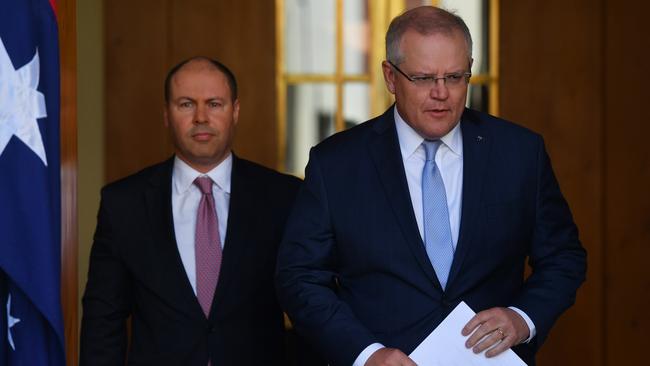
More than 72 per cent of the nation’s 13.2 million-strong labour force is now employed by federal, state or local governments, supported by JobKeeper or in receipt of JobSeeker.
You wouldn’t notice that from the one-percentage-point growth in the official jobless rate, which rose from 5.2 per cent in March to 6.2 per cent last month.
The Treasurer revealed on Thursday that just over six million workers were being supported by JobKeeper, and a further 1.6 million by JobSeeker, the new supercharged unemployment benefit.
The former count as employed, regardless of how little they are actually doing; many of the latter don’t count at all, given recipients no longer have to actively look for work — a critical part of the official definition of unemployment.
So long as the range of extraordinary government support lasts, the headline jobless rate is less informative than it’s ever been, totally divorced from the community’s understanding of what unemployment means.
More interesting, because it captures some of the furloughed but “employed” JobKeepers, is the total number of hours worked, which plunged 9.2 per cent over the month.
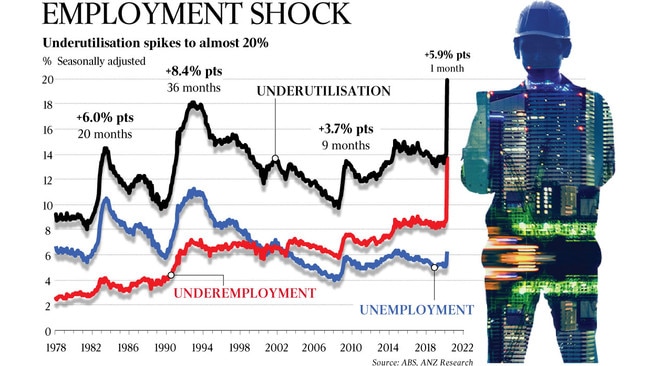
The Australian Bureau of Statistics also said total employment had fallen almost 600,000 without a corresponding increase in the number of unemployed, which rose only 105,000 over the month to April. Those people were either too stressed to look for work — perhaps minding children — or, on the bright side, could fall back on other household resources and didn’t need to work.
As the ABS said, had the 489,900 people who left the official labour force been counted as unemployed, April’s unemployment rate would have been 9.6 per cent. The underutilisation rate, which adds the unemployment and underemployment rates, hit a record 19.9 per cent, eclipsing the 1992 high of 18.2 per cent.
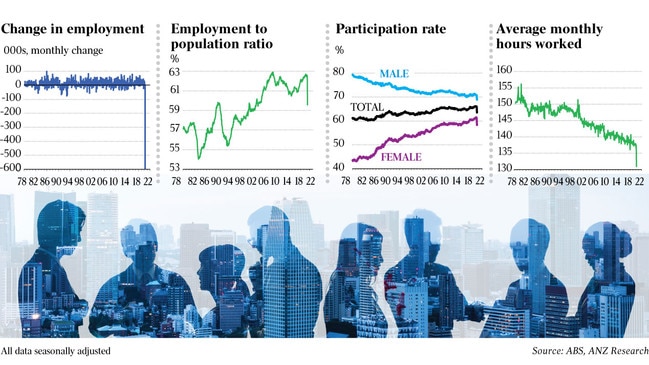
For all the bad news, the worst might be over already. Lockdown measures are unwinding sooner than expected. Politically, JobKeeper has been a genius move by the government, drastically curbing the extent to which the official jobless rate rises.
Economically, the jury is still out. The government had an obligation to help workers of businesses it had shut down, but the subsidy will blunt businesses’ incentive to be self-sufficient. Prising the payments off businesses come September will be fraught.
Then there’s the cost: 28 per cent of the workforce can’t carry everyone else for long.


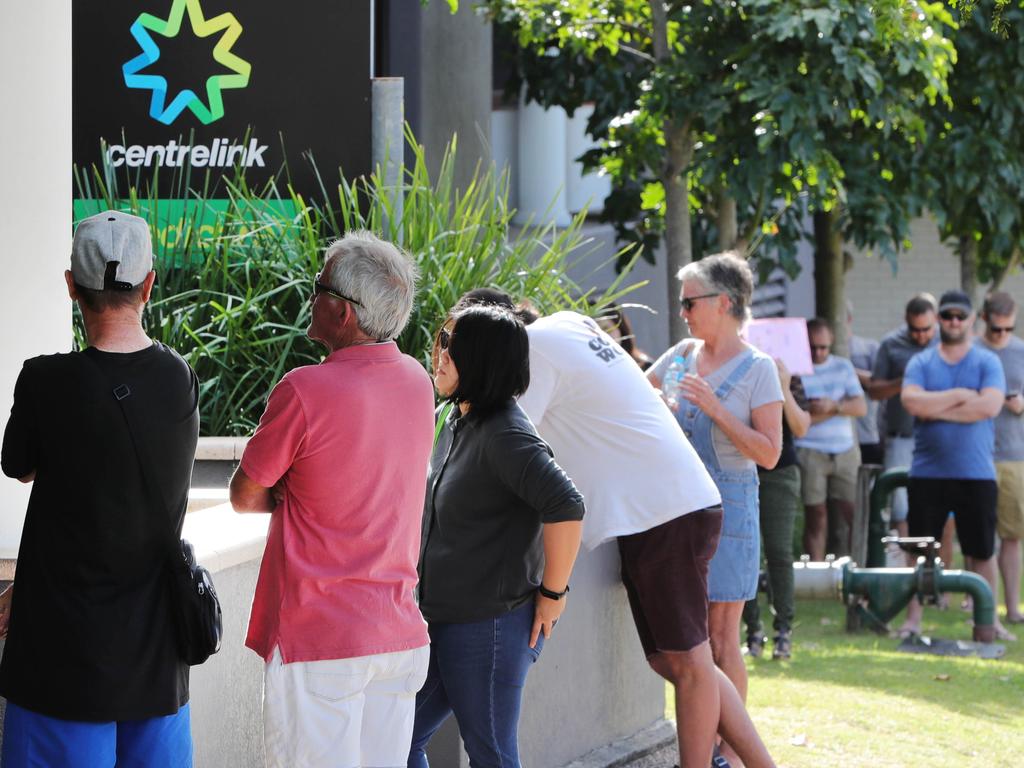


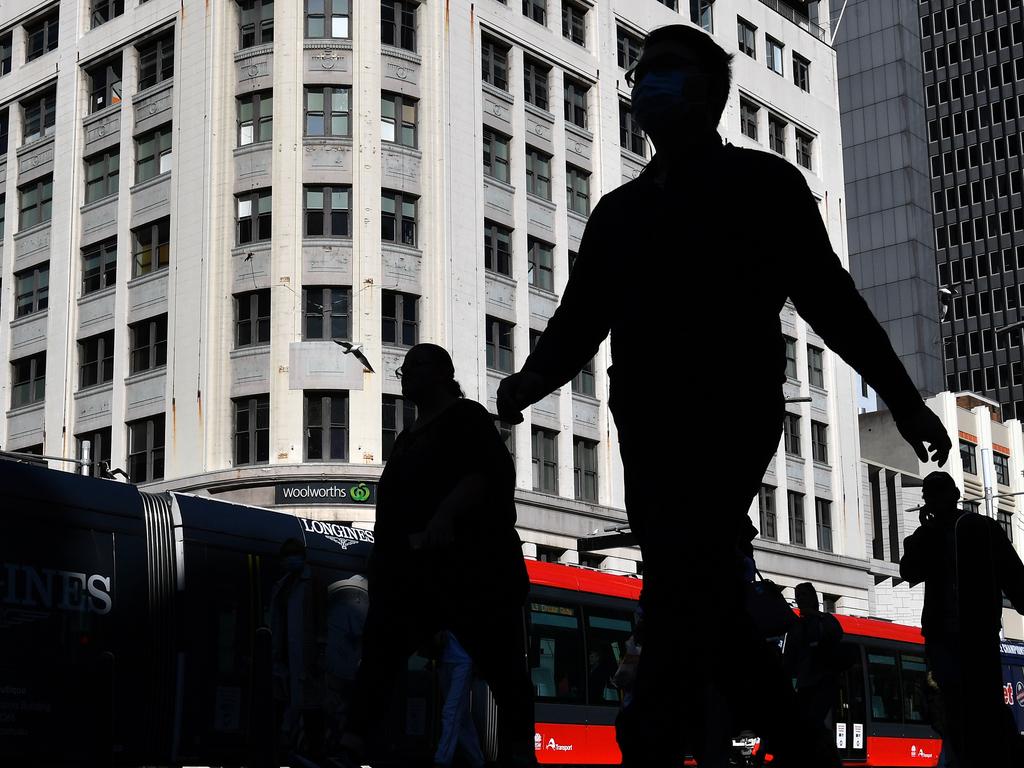


Never in Australian history have so many depended on so few.